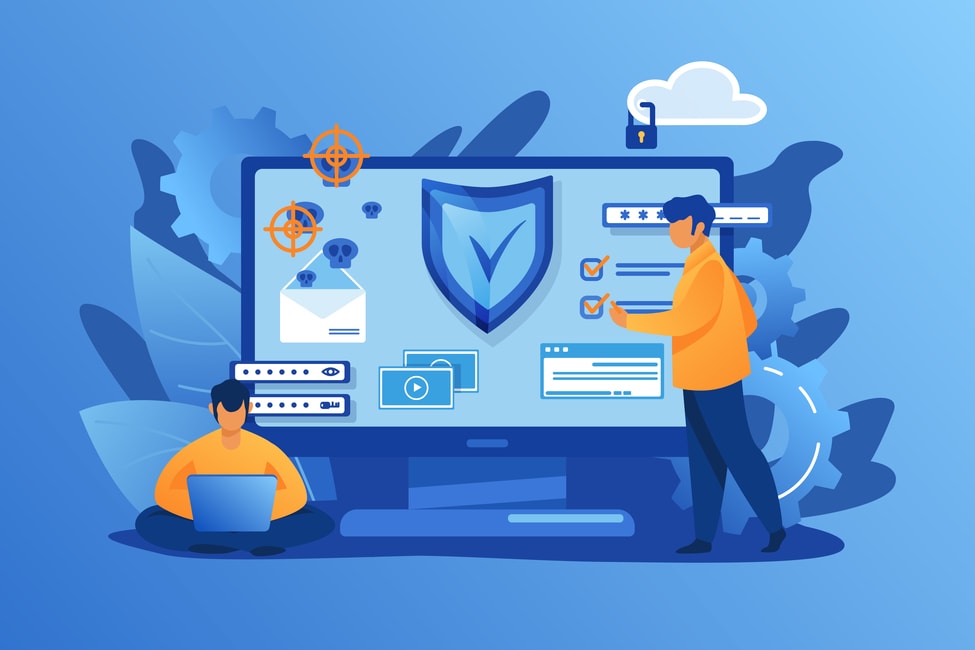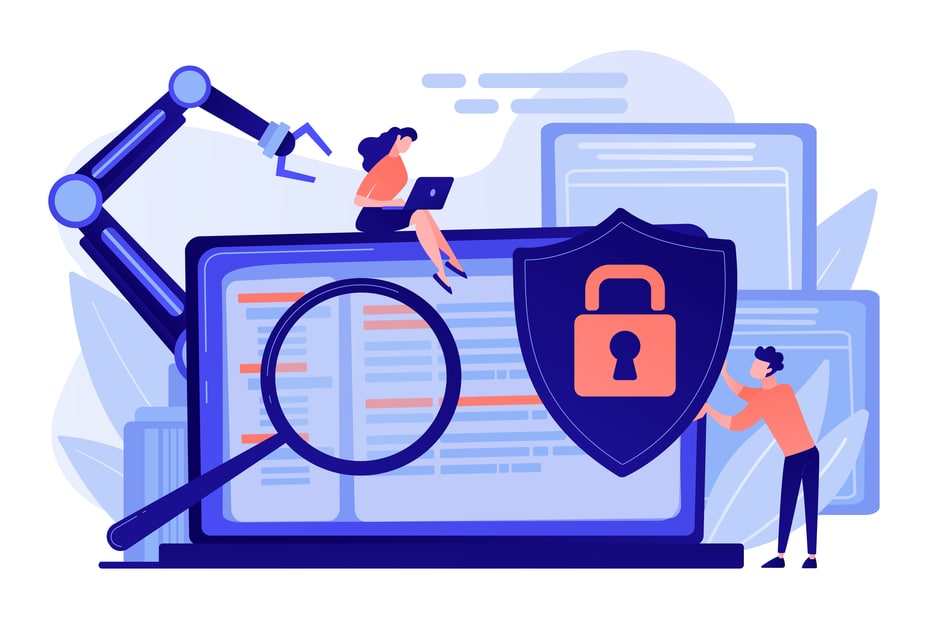With the rising cybersecurity issues being a significant concern for many businesses and organizations across the United States, individuals have seen increased efforts to understand cybersecurity rules better. Technology companies big and small have come to understand the Shared Information Security Responsibility model.
The Shared Information Security Responsibility model refers to the shared information security responsibility between the organization and its third-party providers. The model emphasizes the development of a shared security culture that aligns the interests of cloud providers and their customers. With this approach, both the cloud computing provider and its customers are held accountable for their security duties.
Whether you run a company that needs robust IT services or you’re the head of an IT business that performs as a third-party provider, understanding the Shared Information Security Responsibility model is crucial. The following article will delve into specific aspects vital to the Shared Information Security Responsibility model so you will gain a better understanding of the concept and what it’s comprised of.
The Rise of Outsourcing Various Components of IT Services
Many companies have outsourced their IT departments to third-party providers in the past few decades. The outsourcing of IT services has created a vast market for the information security industry. Companies source various services from their IT providers, including provisioning and managing hardware, software, and applications. In addition to that, they also outsource storage and storage management services to cloud providers.
As organizations are increasingly opening up their IT resources to third-party providers, they also allow them to handle their data. The data includes personal and sensitive information that cybercriminals could use for phishing and other forms of cyberattacks. As a result, the shared information security responsibility model has been implemented in many countries to ensure that both parties are equally responsible for the security of their IT environment.
Do you need help in utilizing the shared information security responsibility Model?
What Happens When There Is an Unclear Delineation of IT and Information Security Responsibilities?
When an organization hires a third-party provider to handle certain aspects of their IT environment, they should make it clear to the IT provider what is allowed and what is not. For instance, if the company wants its cloud provider to handle the management of sensitive information, it must ask them to sign a confidentiality agreement before engaging them in such a process. This way, the cloud provider will acknowledge their obligations to the company and maintain confidentiality with the information. As can be seen, ensuring that there is a clear delineation of responsibilities helps to reduce the likelihood of misunderstandings and security breaches.
However, some third-party providers take a more relaxed approach when handling the responsibilities of their customers, like saving sensitive information to their servers. Cloud providers may also risk their customers’ data by failing to adhere to basic security practices like periodic backups and application patching.
In the case of unclear delineation of responsibilities, companies can apply the Shared Information Security Responsibility model to ensure that both parties are equally responsible for the security of their environments. If a cybercriminal gains access to your data, or if cybercriminals hack you, it will be clear whom you should hold accountable for the problem.
When Contracts Are Not Specific Enough
When a company hires a third-party provider for any IT service, a contract is signed between the two parties to ensure that both parties understand their responsibilities. By having clear contractual obligations in place, both parties will know what they are responsible for and, more importantly, what to expect from one another. As a result, the company can enforce the contracts in case of a security breach involving an agreement violation.
However, sometimes it can be challenging to pin down exact contractual obligations for organizations that are not used to entering long-term contracts with a third-party provider. This can be especially true if the organization always tends to outsource its IT department on a short-term basis. For this case, when contracts are not specific enough, the Shared Information Security Responsibility model can be applied. It will ensure that both parties are responsible for the security of their environment.
What Happens When Things Go Wrong Between the Third-Party Provider and the Organization?
When a third-party provider agrees to handle certain aspects of an organization’s IT environment, there is always the possibility that things will go wrong. There have been many cases where companies are unhappy with their third-party provider because of the slow response time for cyberattacks. This is especially true for cloud providers since they provide services on a pay-per-use basis. As a result, this makes it difficult for organizations to pinpoint who is responsible if they receive any form of attack.
When this is the case, the Shared Information Security Responsibility model comes in. In this scheme, both parties must be held responsible for the security of their IT environments. It may also help prevent information security incidents since both parties are equally responsible for protecting sensitive information.
For example, if a cybercriminal gains access to your data through a phishing attack, they can use the acquired information to attack your third-party provider’s systems. Once this happens, you can hold your third-party provider responsible for the security of your data. This way, you don’t have to be afraid of a breach if you already share the information security responsibility with them.
Why Is There a Need to Develop a Shared Responsibility Matrix to ID Potential Gaps?
Some IT employees are very knowledgeable and highly skilled in their jobs. This, coupled with their access to sensitive customer data and systems, means that they can also be a target for cybercriminals.
You cannot expect most of your staff to be as diligent in preventing these kinds of security breaches as you would like them to be because they are probably busy focusing on other aspects of their job that require technical know-how and expertise. By focusing on the roles and responsibilities of information technology staff, computer staff, IT employees, and other third-party providers, you can improve security.
In fact, in many countries worldwide, a law requires the organization to provide adequate training to its employees and other third-party providers. The training includes instructions on what they should know regarding information security, which is essential for understanding where they need to look to prevent cyber-attacks.
IT departments often use software applications that are not password-protected. It results in unauthorized individuals accessing sensitive data. This is why information security departments need to focus on the roles and responsibilities of their staff and other third-party providers. By doing so, they can help prevent information security incidents from happening in the first place.
Although there are many suitable software applications, they are not always as secure as they should be. This can mean that any software you are using is under-protected and vulnerable to cybersecurity issues like cyber-attacks. For example, your email program may have a feature that allows you to forward sensitive data against the organization’s guidelines to anyone you choose.
Utilize the shared information security responsibility model and ensure data security now!
On top of that, we know that there is a chance for information security incidents to happen because of the third-party provider who handles sensitive data. If a cybercriminal gains access to your data via your third-party provider, you can hold them responsible for the security of your data.
When someone leaves their current job, you will want to ensure that they will not take sensitive information. Many organizations have a no-compromise policy to prevent information security incidents from happening. This policy requires that all employees sign non-disclosure agreements and agree not to take any sensitive information when leaving the company.
However, contracts may not be enough to protect your organization from information security incidents. It is especially true if you have a poorly written agreement that does not outline the risks of outsourcing your IT environment to a third-party provider.
Businesses need to develop shared responsibility matrices that show the roles and responsibilities of IT departments and their third-party providers. Having security strategies in place are crucial for sustainable business growth. By showing these different elements on the matrix, you can clearly define who’s responsible for any information security incident.
Summing Up the Shared Information Security Responsibility Model
The information security field is changing all of the time. There are new threats that organizations need to protect themselves from and unique solutions that make it easier for them to do so.
Additionally, the number of third-party providers you will be outsourcing your IT department to could also be growing. As a result, this means that there may be more opportunities for cybercriminals to steal sensitive customer information, which is why it’s essential to have a clear plan to prevent information security incidents from happening in the first place. You don’t want your company to lose out on growing or becoming more successful because of hitches in your information security plan.
Consider utilizing the Shared Information Security Responsibility model as you develop a relationship with your business’s third-party IT department. Using such a model demonstrates your company’s growth mindset and allows for better communication between both parties. By focusing on your organization’s roles and responsibilities regarding information security, you can avoid many problems with cybersecurity in the future.
Growth Hackers is a reputable insurance marketing agency helping businesses from all over the world grow. There is no fluff with Growth Hackers. We help entrepreneurs and business owners utilize shared information security responsibility models, generate qualified leads, optimize their conversion rate, gather and analyze data analytics, acquire and retain users and increase sales. We go further than brand awareness and exposure. We make sure that the strategies we implement move the needle so your business grow, strive and succeed. If you too want your business to reach new heights, contact Growth Hackers today so we can discuss about your brand and create a custom growth plan for you. You’re just one click away to skyrocket your business.







